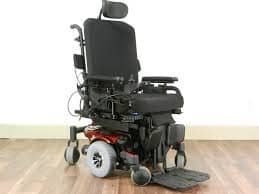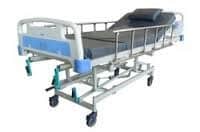The advancement in technology and medical automation has led to the increased use of linear actuators in the medical field that has continued to render pneumatic and hydraulic systems obsolete. The use of actuators will vary depending on their sizes that range from the tiny ones (2” strokes) to the large ones (24” stokes). Other than changes in technology, several other contributing factors have necessitated increased actuators in the health sector.
Key reasons for the increased usage of actuators in the medical field
First, the size of a machine is a factor to consider when deciding the technology to use. Actuators are appealing in size, especially compared to hydraulics that can yield a similar amount of strength. Secondly, when in action, actuators produce less noise as compared to pneumatic and hydraulic solutions. The hiss and gurgle sound found in pneumatics and hydraulics do not exist in actuators that have triggered their continued use. The photo below is a sample of the actuator’s wheelchair.
Another positive factor that has contributed towards the use of actuators is that they are precise. Pneumatic pistons can be positioned correctly at either full extension or retraction. Lastly, actuators have fewer moving parts implying that fewer parts are under pressure that in turn translates to fewer points of failure. This final attribute of actuators helps in saving the costs associated with machine maintenance.
Motorized Wheelchairs and other Power Assisted Seating
Today, most motorized wheelchairs and electric mobility devices have widely employed actuators, replacing the traditional pistons and gears. Due to the need for space efficiency and low power requirements, smaller linear motors are used to power the following features; height adjustments- special devices fitted under the seat that can lower or raise it depending on the users’ preference; arm and leg adjustment- some chairs are modified to place e the arm and leg rest explicitly individually. Their accuracy and high lock force make them fit for this purpose; control systems- most chairs are equipped with control systems that enable the user to control its movement from his hands, mouth, or feet. The picture below is an example of a modern motorized wheelchair.
Hospital Beds and Chairs
Because of their high accuracy and precision, actuators are popular in an adjustable hospital bed. Their power enables their occupants to lower or raise certain parts of the bed as they see fit. Another feature of these beds is that they allow one to rotate them to either side, making it easier to get into and out of bed. These devices have previously used hydraulic and pneumatic powering systems, but due to advancements in technology and price reduction, actuators have become more preferable. For instance, this technology has further extended in some other areas of life example, some of the home beds have started incorporating these features. The photos below are an example of the modern hospital beds.
Other areas of medicine that have benefited from applying actuators technology include dental chairs, surgical chairs, and examination tables. In conclusion, due to their unique features and merits, such as their precise movement and quiet operations, actuators have managed to supersede other technologies such as mechanical and hydraulic systems. As advancement continues, it is possible to have more useful applications from this technology.









